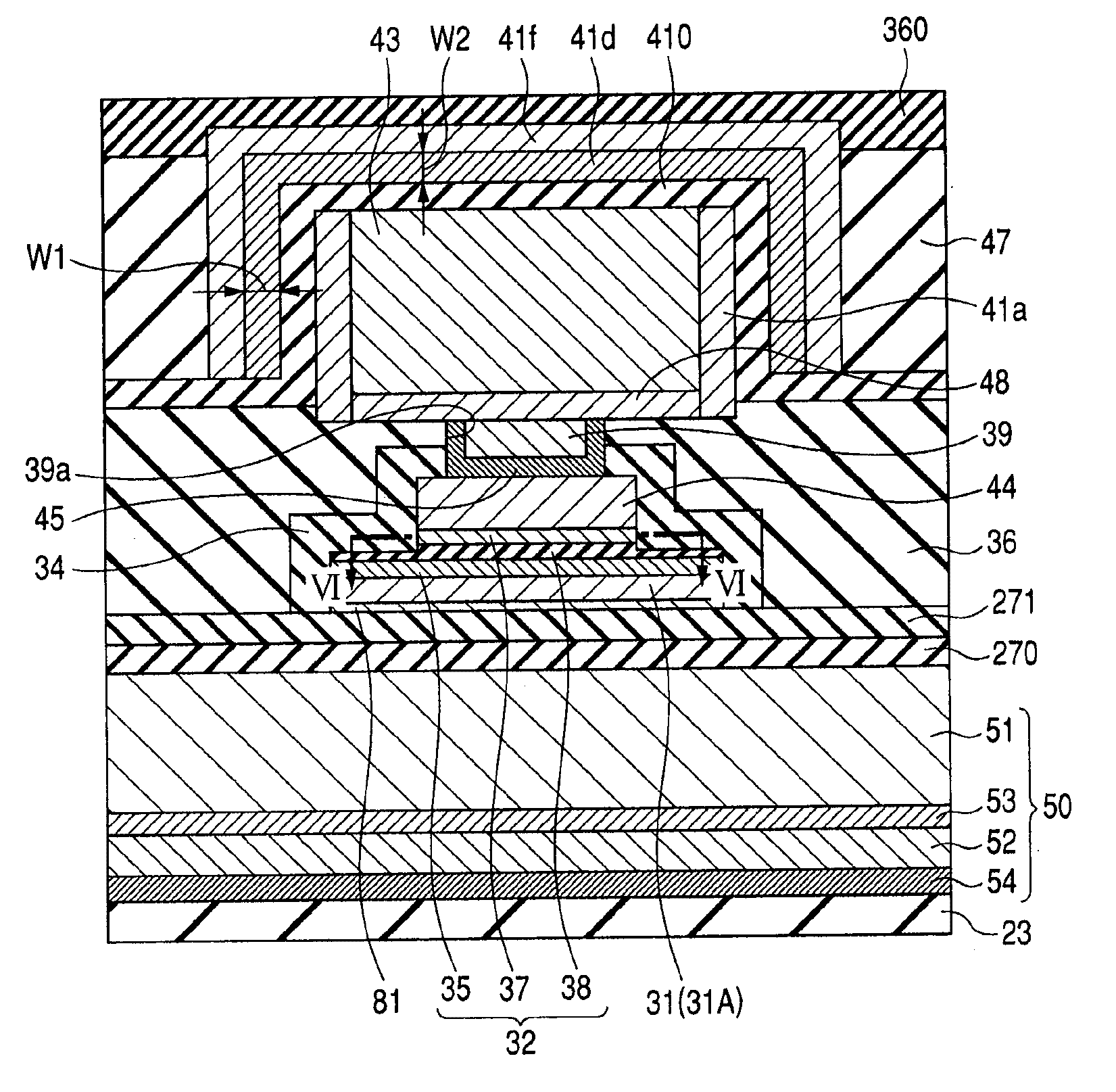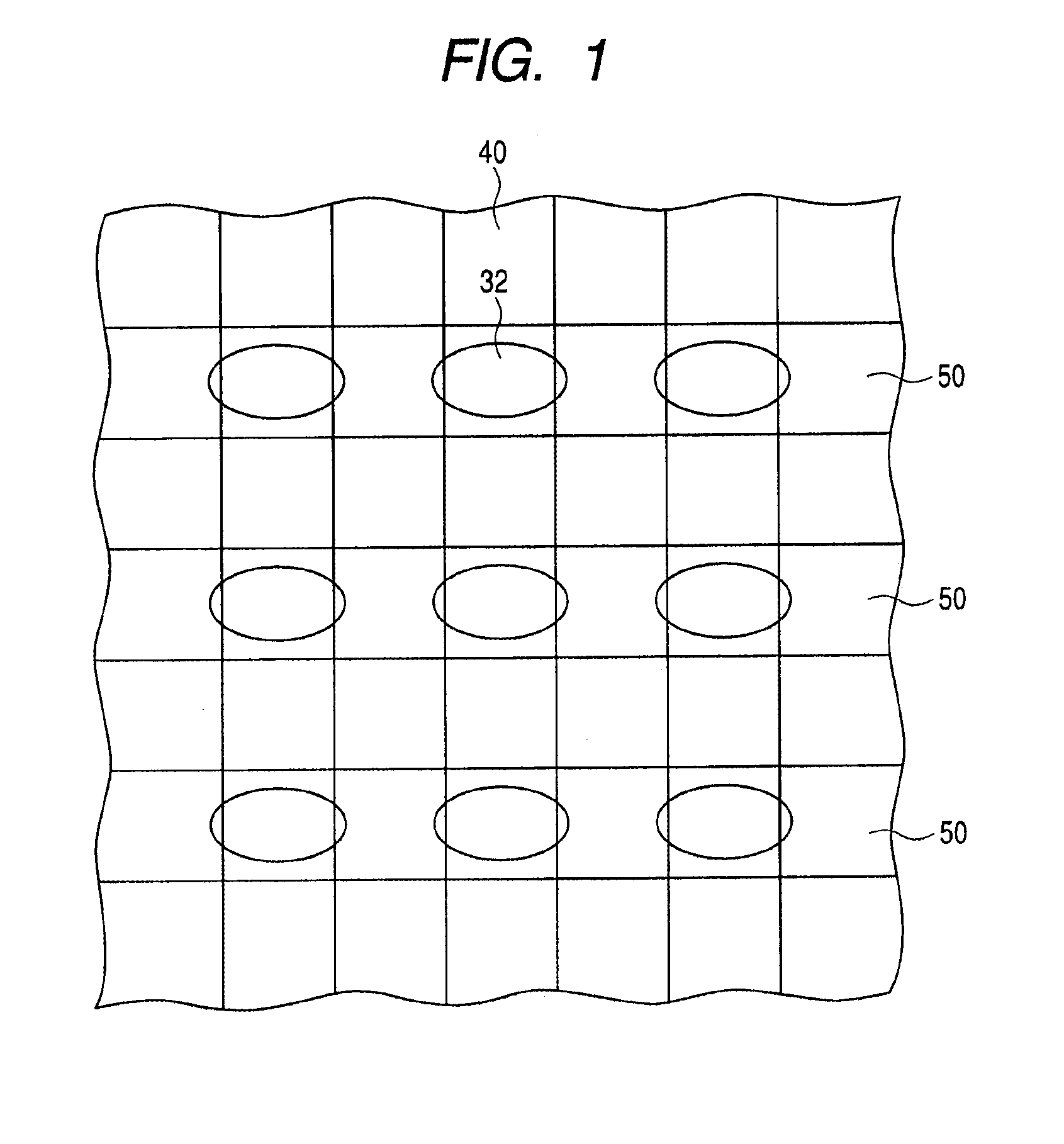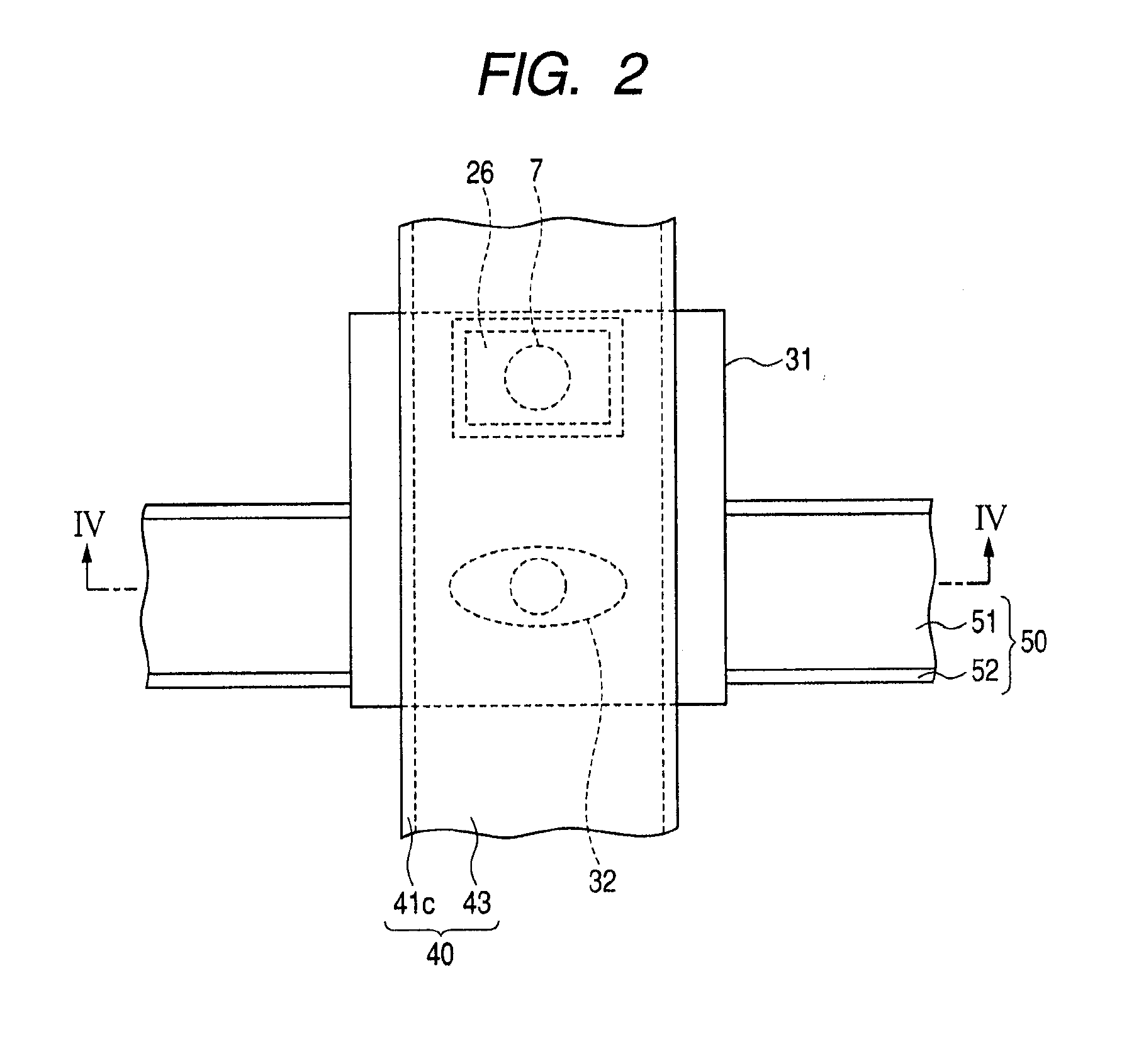Semiconductor device and manufacturing method of semiconductor device
- Summary
- Abstract
- Description
- Claims
- Application Information
AI Technical Summary
Benefits of technology
Problems solved by technology
Method used
Image
Examples
first embodiment
[0088]FIG. 1 is an exemplary plan view showing a semiconductor device 200 according to a first embodiment of the invention. As shown in FIG. 1, a semiconductor substrate 100 is provided with bit lines 40 extending in one direction, digit lines 50 positioned below the bit lines 40 and formed to intersect the respective bit lines 40, and magnetoresistive elements 32, each positioned between the digit line 50 and the bit line 40, and formed in a region where the digit line 50 and the bit line 40 intersect.
[0089]The bit lines 40 extend in one direction and are formed spaced apart from each other. The digit lines 50 extend in the direction of arrangement of the bit lines 40, and are formed spaced apart from each other in the direction of extension of the bit line 40. Each magnetoresistive element 32 is provided in the corresponding region where the digit line 50 and the bit line 40 intersect.
[0090]FIG. 2 is a plan view showing the magnetoresistive element 32 and its surroundings. As show...
second embodiment
[0208]The semiconductor device 200 according to a second embodiment has the substantially same structure as that of the semiconductor device 200 of the first embodiment. The second embodiment slightly differs from the first embodiment in the structure of the magnetoresistive element 32. Specifically, by comparing FIG. 43 with FIG. 28, a magnetoresistive element 32 of the second embodiment includes a second upper electrode 94 in addition to the first upper electrode 44. The magnetoresistive element 32 of the first embodiment has only the single-layered upper electrode, namely, the first upper electrode 44, but has the two-layered lower electrode, namely, the first lower electrode 31 and the second lower electrode 81. The magnetoresistive element 32 of the second embodiment, however, has two-layered structure in each of the upper electrode and the lower electrode. Thus, also the upper electrode may be comprised of two-layered structure, like the lower electrode. The second lower elect...
third embodiment
[0226]A semiconductor device 200 of the third embodiment includes substantially the same structure as that of the semiconductor device 200 of the second embodiment, but includes a few differences of the magnetoresistive element 32 from that of the second embodiment. Specifically, by comparing FIG. 51 with FIG. 43, the magnetoresistive element 32 of the third embodiment includes a third upper electrode 95 in addition to the first upper electrode 44 and the second upper electrode 94. The semiconductor device 200 of this embodiment includes a third lower electrode 82, in addition to the first lower electrode 31 and the second lower electrode 81. In the magnetoresistive element 32 of the second embodiment, the upper electrode has a two-layered structure of the first upper electrode 44 and the second upper electrode 94, and the lower electrode has a two-layered structure of the first lower electrode 31 and the second lower electrode 81. In the magnetoresistive element 32 of the third emb...
PUM
 Login to View More
Login to View More Abstract
Description
Claims
Application Information
 Login to View More
Login to View More - R&D
- Intellectual Property
- Life Sciences
- Materials
- Tech Scout
- Unparalleled Data Quality
- Higher Quality Content
- 60% Fewer Hallucinations
Browse by: Latest US Patents, China's latest patents, Technical Efficacy Thesaurus, Application Domain, Technology Topic, Popular Technical Reports.
© 2025 PatSnap. All rights reserved.Legal|Privacy policy|Modern Slavery Act Transparency Statement|Sitemap|About US| Contact US: help@patsnap.com



